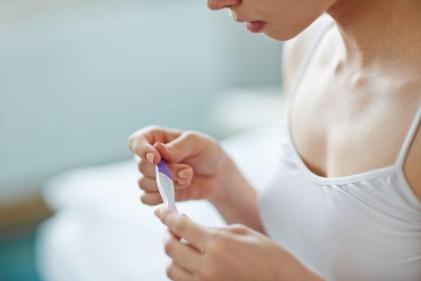With one in five people reported to experience problems conceiving, it is no surprise that more people are turning to IVF for help.
Clomid is a drug that can be used to help women undergoing IVF to conceive. It is an increasingly popular fertility drug and widely prescribed in the UK.
However, some women are now buying the drug online and administering it themselves in the absence of specialist expert advice. This is an unsafe practice and can put women at risk of developing serious allergic reactions, multiple births and developing (in extreme instances, fatal) Ovarian Hyper Stimulation Syndrome (OHSS).
In this article Professor Dr Geeta Nargund, Medical Director of CREATE Fertility, explains what clomid is and how it should be administered.
1. What is clomid and how does it work?
Clomid (or Clomifene Citrate) is a drug that can help some women ovulate. It is an oestrogen-like hormone that stimulates ovarian follicular growth and is used for ovulation induction in anovulatory women (women who do not naturally ovulate).
2. When is clomid recommended?
Typically clomid will be prescribed to women who suffer with Polycystic Ovary Syndrome (PCOS) and who therefore do not ovulate naturally.
It may also be used as the first line of ovulation induction and in insemination cycles where ovulation induction is needed
It is also used for ovarian stimulation in IVF cycles with or without a small dose of follicle-stimulating hormone (FSH) injections. It is one of the methods used in "Mini or Mild” IVF to reduce cost, discomfort of injections and prevent health risks of FSH stimulation
3. How is it taken?
Clomid is easily taken as it comes in tablet form. At CREATE Fertility, we use clomid for women who want to avoid injections during the IVF process, have "needle-phobia" or want to reduce the cost of their treatment.
4. How can I get hold of it?
Clomid should only be prescribed by a fertility specialist who understands your medical history. Dosages need to be carefully tailored and the patient’s response to the drug closely monitored in order to achieve an optimal outcome and avoid harmful side effects.
5. What are the side effects?
One of the potential side effects is OHSS, which is a clinical condition resulting from over-stimulation of the ovaries. While most cases of OHSS are mild and can include symptoms such as nausea and abdominal bloating, in rare cases the condition can be fatal.
Additional potential side effects can include (but are not limited to) nausea, vomiting, hot flushes, headaches and blurred vision. The drug can also increase the chance of patients having multiple pregnancies.
6. What sort of dose is given and how is it monitored?
Lower doses of clomid should be used initially to avoid the risks of OHSS and multiple births. Cycles should be monitored with ultrasound scans to assess the response of the ovaries and the lining of womb (at least for the first cycle) and blood tests for progesterone should be undertaken on day 21.
7. What needs to be considered before clomid is prescribed?
Critically, pregnancy must also be ruled out before clomid is prescribed. Other causes for anovulation should also be excluded before clomid is used. These can include bodyweight issues and other hormonal disorders. In particular, women with PCOS who are overweight are advised to lose weight before treatment.
8. When is clomid not appropriate?
Clomid is not appropriate in the following instances:
- For women who are ovulating naturally or those who have unexplained infertility. Success rates for those with unexplained infertility are not higher when using clomid, so alternative treatments should be sought.
- Women who have ovarian cysts, fibroids, endometriosis, liver disease or adrenal or pituitary conditions need further medical attention before considering using clomid. In addition, it is not suitable for women with blocked or damaged fallopian tubes.
- Women with low ovarian reserve for ovulation induction purposes, because timing is of the essence. However, as mentioned earlier it can be successfully used as part of stimulation in IVF cycles.
9. What happens if there is no response to clomid?
Women who do not respond to clomid may need low dose FSH injections to induce ovulation.
10. What are the success rates for clomid?
Most women who are not naturally ovulating will ovulate when taking 50 mg clomid per day for five days per cycle. For women who have ovulate with 50 mg clomid, cumulative conception rates are around 50% after three months and 62% after six months.
Higher doses are required in women with higher BMI but these are done carefully as dosages higher than 100 mg per day can add very little to success rates.
















